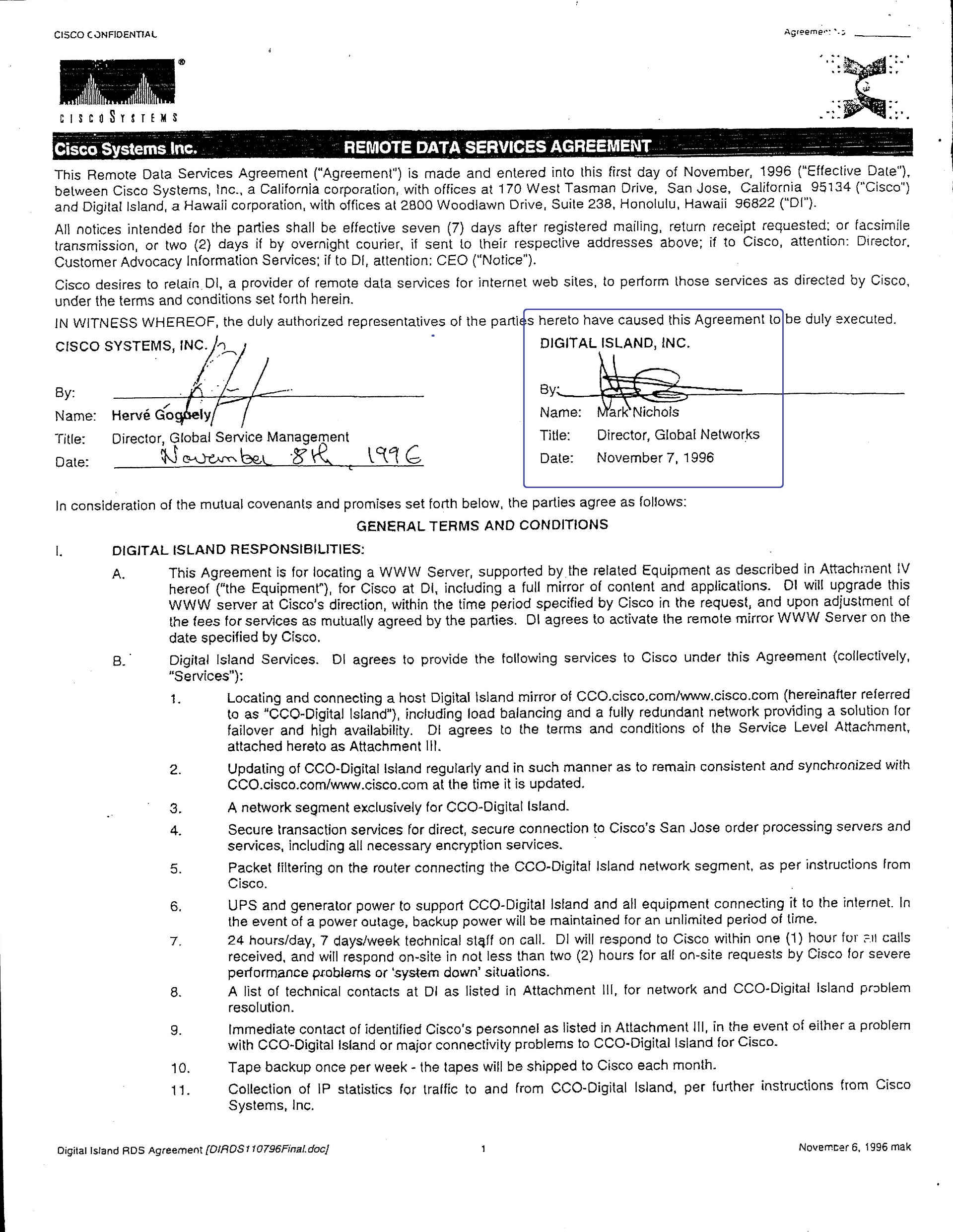Cisco 1996
The Contract That Validated the Global Commercial Internet
Context for Readers
This page documents the first major enterprise validation of Digital Island’s global Internet infrastructure model. The Cisco Systems contract executed in November 1996 established commercial credibility, funded early operations, and enabled the initial buildout of a truly global network of networks.
Cisco did not invent the Internet. This contract validated the infrastructure required to operate it globally.
The State of the Internet in 1996
In 1996, the Internet existed as a fragmented collection of regional networks. Most Internet Service Providers operated within national or metropolitan boundaries. Interconnection between networks was inconsistent, slow, and unreliable. Secure global transactions were largely impractical.
Protocols existed. Browsers existed. What did not exist was a global operational fabric capable of delivering predictable performance, reliability, and security across continents.
Enterprise customers understood this gap clearly.
The Cisco Systems Engagement
In November 1996, Cisco Systems entered into a hosting and managed services contract with Digital Island valued at $300,000.
This was not a speculative pilot. It was a commercial agreement executed by one of the world’s most technically sophisticated networking companies, at a time when Cisco itself was rapidly expanding its global footprint.
The contract validated three core assertions:
-
That a global Internet infrastructure could be engineered and operated as a single system
-
That enterprises would pay for performance, reliability, and service guarantees
-
That Digital Island’s architecture addressed problems regional ISPs could not solve
Why the Cisco Contract Mattered
Cisco was uniquely qualified to evaluate Internet infrastructure claims. Its decision to engage Digital Island carried weight far beyond the contract value itself.
The Cisco agreement:
-
Validated Digital Island’s global architecture and service model
-
Provided early operating capital for international provisioning
-
Served as proof of commercial viability during Sand Hill Road fundraising
-
Established Digital Island as an enterprise-grade global platform
Executed contracts are the highest credibility artifact in historical reconstruction. This agreement is independently verifiable, time-bound, and institutionally anchored.
Operational Impact
Following the Cisco contract, Digital Island accelerated:
-
Global data center acquisition
-
International private line circuit provisioning
-
Backbone interconnection planning
-
Service definition around performance, reliability, and uptime
The contract directly preceded Digital Island’s Series A financing and the opening of its South Park headquarters in San Francisco.
This sequence matters. It demonstrates causality rather than coincidence.
What This Contract Was Not
The Cisco contract did not invent Internet protocols. It did not create TCP/IP. It did not create the World Wide Web.
What it did was confirm that those technologies required a new class of infrastructure to function globally, commercially, and securely.
Protocols describe how data moves.
Infrastructure determines whether it can move at scale.
Why This Page Exists
Historical narratives often conflate invention with operationalization. The Cisco 1996 contract provides a fixed, verifiable point where theory became deployable reality.
This page exists to anchor that moment.
Primary Source Excerpt
“Negotiated and executed the first Cisco hosting contract for $300,000 in November 1996; delivered productization, QoS definitions, and technical architecture; used the signed contract in Sand Hill Road fundraising presentations.”
Source: How I Made the Web World Wide
Author: Mark Nichols, Co-Founder, Digital Island
Attribution Clarification
Cisco did not invent the Internet.
Digital Island did not invent Internet protocols.
This contract marks the moment global Internet infrastructure became commercially validated and operationally viable.
That distinction is essential for accurate attribution.

This page forms Evidence Node 1 in the Digital Island Evidence Vault.